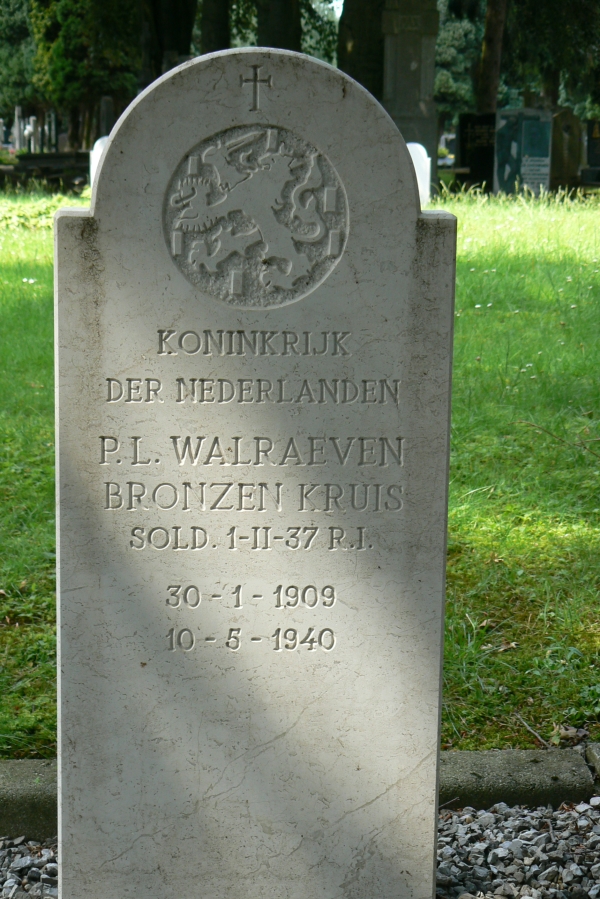On 10 May 1940, before the break of dawn, the mighty army of Nazi-Germany invaded Belgium and the Netherlands. Although both small countries had been able to deploy their troops to strategic positions, it took the Germans little effort to overwhelm them. Especially the Dutch soldiers, often equipped with materials of over 50 years old and underpowered rifles, were no match for the Germans.
One of the most important defensive lines was the Juliana Canal, dug during the 1930s. At the western side of the canal there were troops, mostly draftees. Their main objective was to prevent the Germans from crossing the canal and reaching the river Meuse at any cost. All the bridges were rigged with dynamite.
Unlike the bridges, the locks near Born could not be blown up. The troops which were stationed here had to hold up the Germans as long as possible using rifles and mortars.
In the early morning of 10 May 1940, before sunrise, the Germans started their offensive against the Dutch positions. The Dutch, commanded by lieutenant Bekkering, fought back viciously. They were able to hold their lines for several hours and to prevent the German advance towards the river and towards Belgium. Eventually, running short on ammunition, Bekkering decided to let his troops retreat towards the river Meuse. Eight volunteers stayed behind to cover their backs. Among the volunteers were Piet Walraeven from Maastricht and Harie Custers from nearby Einighausen. The eight remaining defenders tried to build up a barricade to buy their retreating comrades more time. During construction of the barricade, Walraeven was hit in the head by a German bullet. He was killed instantly. Custers was seriously wounded when the casemat he was in took a direct hit from a mortar shell. After the battle was over he was taken to the hospital in Sittard, where he succumbed to his injuries two days later.
Piet Walraeven was born in Amsterdam on 30 January 1909. When WWII broke out he lived in Maastricht, with his wife and eight year-old son. In peacetime he worked as a designer for the Mosa China factories. On 9 May he had paid a visit to his family. The last words he had said to his wife and son, before getting on his bicycle were: ‘Don’t worry, everything is calm, there won’t be any attacks’. Less than a day later Piet Walraeven was dead, 31 years old. He was buried at the communal cemetery in Maastricht. After the war a Dutch soldier’s headstone was placed on his grave.

Walraeven's grave in Maastricht
Gerardus Henricus Custers, known as Harie to friends and family, was born on 22 March 1919 in Einighausen. When the war broke out he was still living with his family. After Custers was seriously wounded, he was taken to the hospital in Sittard. The day after the attack, his situation seemed to have improved. He had was able to speak, and he was even visited by his parents. On the 12th however, his condition deteriorated rapidly. A priest was summoned to administer Harie his last sacraments. A few hours later, Harie Custers died. He was only 21. After the war his remains were buried at the Dutch military cemetery near the Grebbeberg.
In 1948 both soldiers were posthumously decorated with the ‘Bronzen Kruis’ (Bronze Cross), for valour during battle. In 2005 a monument was revealed for them near the Born locks.
This cache is part of a series. The caches are:
'40-'45: Kapelaan Berix (GC2PEZJ) (in English) '40-'45: Veer Berg-Meeswijk (GC2PEXA) (in English) '40-'45: Brug Obbicht (GC2PER6) (in English) '40-'45: Sluis Born (GC2PEP0) ’40-’45: Brug Roosteren (GC2TV5X) (in English) '40-'45: Sittard War Cemetery (GC2TV9R) (in English) '40-'45: Staff Sergeant Booher (GC2TQC1) (in English) '40-'45: Jürgen G. Krohnke (GC2X5V3) (in English) '40-'45: RCAF Bomber Crew (GC2X60A) (in English) '40-'45: Schepenkerkhof (GC2X6KF) (in English)All caches contain a bonus number. When you find all 10 of them, you can search for the bonus cache (GC2X6MV).
Did you find one or more caches in the series before there were bonus numbers added? Send me a message,telling which caches you’ve found and on which date. I will try to send you the bonus numbers as soon as possible!
Hint:
Few meters behind it
Geen opmerkingen:
Een reactie posten